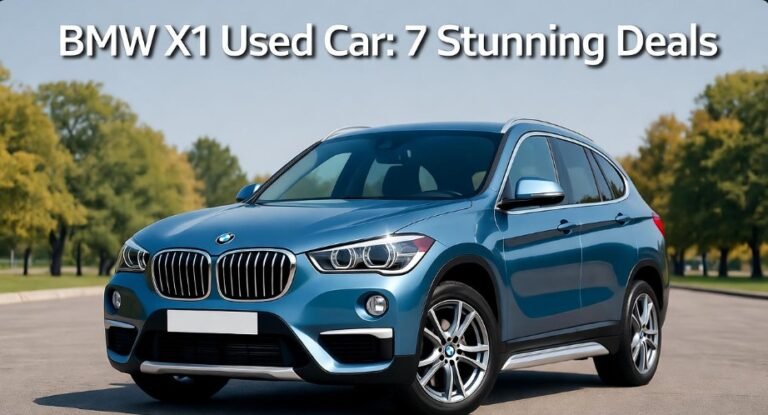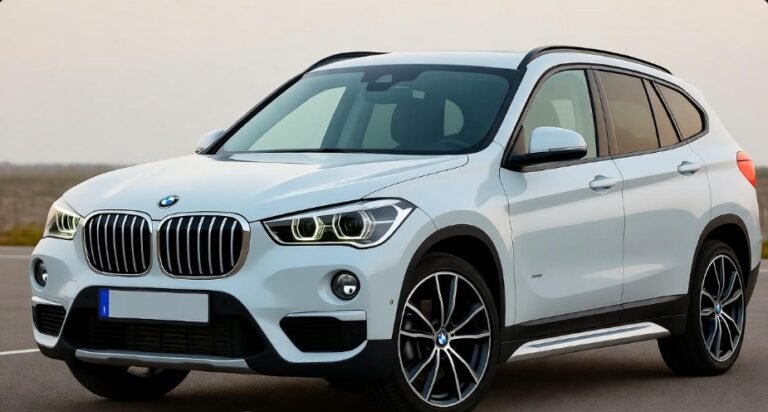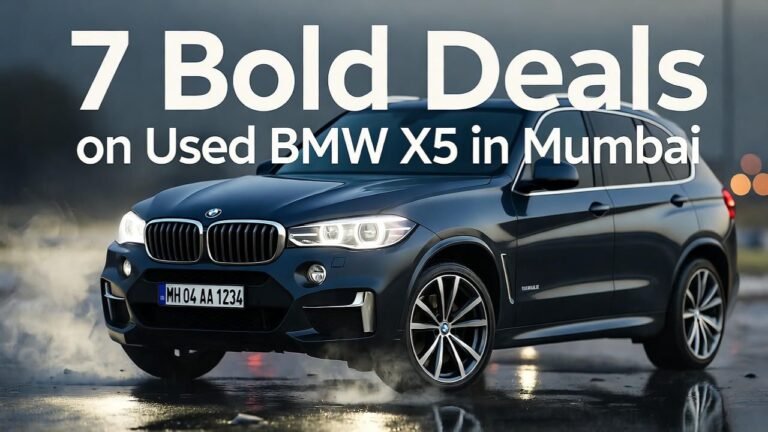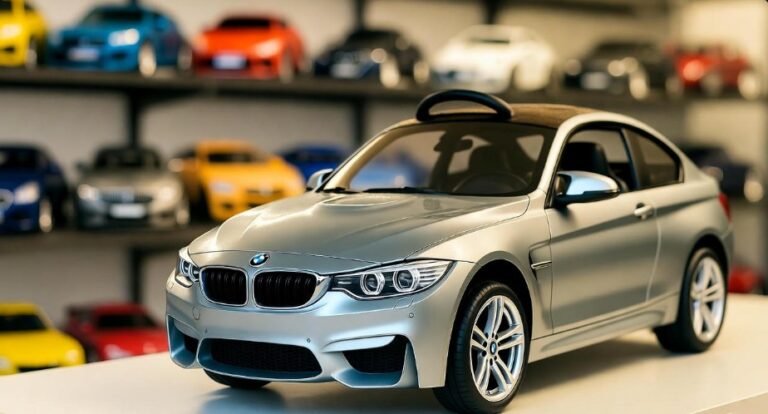BMW Ki Kimat Kitni Hai: Know 6 Facts
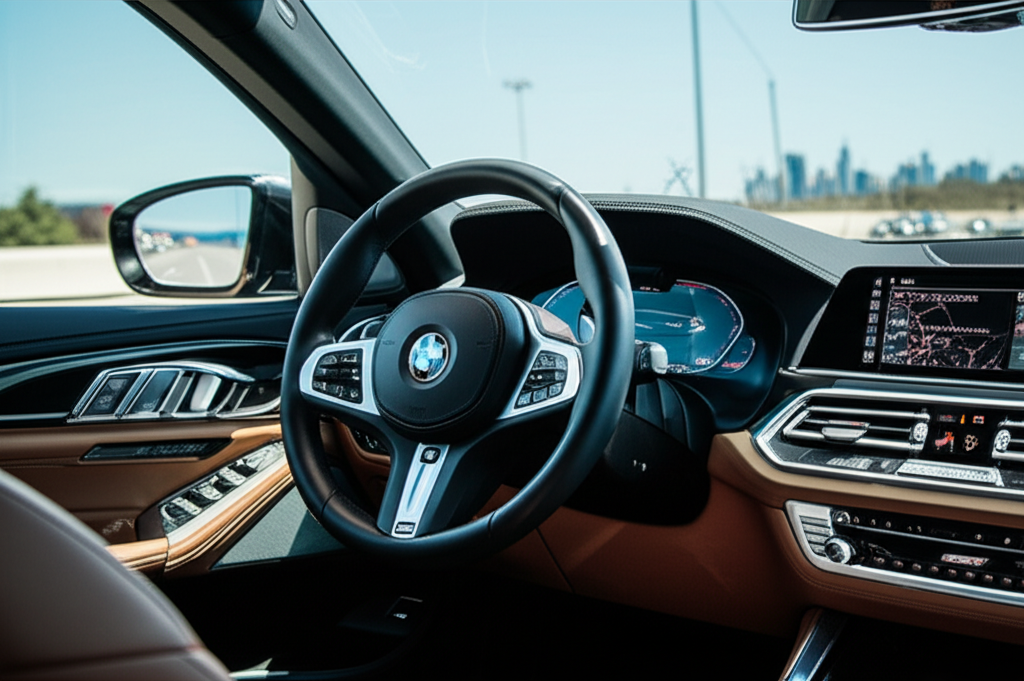
BMW Ki Kimat Kitni Hai: Understanding the Price Range in the USA
Wondering about BMW car prices in the USA? You’re not alone! This luxury brand is a dream for many, but its cost can seem complex. Prices vary widely based on the model, features, and even location. This guide breaks down the key factors influencing BMW prices, giving you the clarity you need. Let’s explore the world of BMW pricing and what you can expect.
Key Takeaways
- Discover BMW pricing factors.
- Learn about new vs. used BMW costs.
- Understand the impact of customization.
- Explore financing and insurance expenses.
- Get insights on depreciation.
- Find ways to get a better deal.
BMW Car Prices in the USA: 6 Crucial Insights
So, you’re curious about “BMW ki kimat kitni hai” – how much do BMW cars cost in the United States? It’s a question many automotive enthusiasts and potential buyers ponder. BMW, renowned for its “Ultimate Driving Machine” slogan, embodies engineering excellence, performance, and luxury. However, this prestige comes with a price tag that can range significantly. Understanding these costs involves looking beyond just the sticker price. We’ll dive into the core elements that determine BMW prices, helping you navigate the market with confidence.
1. Understanding the Price Spectrum: New vs. Used BMWs
When you ask “BMW ki kimat kitni hai,” the first critical distinction is whether you’re looking at a brand-new model or a pre-owned one. Each has its own set of cost considerations.
New BMW Models: The Premium Experience
Buying a new BMW means you’re getting the latest technology, a full manufacturer’s warranty, and that unforgettable factory-fresh scent. The price for new BMWs in the USA generally starts from around $35,000 for entry-level models like the 2 Series Gran Coupe and can soar well over $100,000 for top-tier performance vehicles like the M Series or flagship sedans and SUVs.
Here’s a general idea of starting MSRPs (Manufacturer’s Suggested Retail Price) for some popular new BMW models, keeping in mind these are base prices and can increase dramatically with options:
| BMW Model Series | Typical Starting MSRP (USD) | Body Style(s) |
|---|---|---|
| 2 Series | $36,000 – $45,000 | Coupe, Gran Coupe |
| 3 Series | $43,000 – $60,000 | Sedan, Wagon (Touring) |
| 4 Series | $48,000 – $70,000 | Coupe, Convertible, Gran Coupe |
| 5 Series | $57,000 – $75,000 | Sedan |
| 7 Series | $95,000 – $120,000+ | Sedan |
| X1 | $40,000 – $48,000 | Compact SUV |
| X3 | $47,000 – $65,000 | Compact Luxury SUV |
| X5 | $65,000 – $90,000+ | Mid-size Luxury SUV |
| M Models (e.g., M3, M5, X5 M) | $75,000 – $150,000+ | Performance Sedans, Coupes, SUVs |
These figures represent the starting point. The inclusion of advanced technology packages, premium sound systems, larger wheels, performance upgrades, and luxurious interior materials can significantly push these prices higher. For instance, a fully loaded M Series vehicle can easily exceed $150,000.
Used BMW Models: Value and Affordability
The pre-owned market offers a more accessible entry point into BMW ownership. Prices for used BMWs vary greatly depending on the car’s age, mileage, condition, and the specific model. A 3-Series that retailed for $50,000 a few years ago might now be available for $25,000 to $35,000, depending on its history.
Older models or those with higher mileage will naturally be cheaper. Certified Pre-Owned (CPO) BMWs often come with an extended warranty and have undergone rigorous inspections, making them a safer, albeit slightly more expensive, used car option. You can find used BMWs ranging from under $10,000 for older, higher-mileage vehicles to $50,000-$70,000 for nearly new CPO models or recent performance editions.
Pro Tip: When considering a used BMW, always opt for a pre-purchase inspection by an independent mechanic specializing in European cars. This can uncover potential issues not visible during a test drive and save you from costly repairs down the line.
2. Model Specifics: Which BMW Fits Your Budget?
BMW offers a diverse lineup, and the model series is a primary determinant of its price. From compact sedans to large SUVs and high-performance M cars, each series is designed for a different segment of the market and comes with a corresponding price bracket.
Entry-Level Luxury: 1, 2, and 3 Series
The 1 Series (often a hatchback not widely sold in the US) and the 2 Series Gran Coupe are typically BMW’s most affordable offerings in the USA. The 3 Series Sedan remains a core model, balancing performance, practicality, and a relatively accessible luxury price point compared to larger BMWs. These models are fantastic for those new to the brand or seeking a more agile driving experience.
Mid-Range and Executive Sedans: 4, 5, and 8 Series
The 4 Series offers sportier variants of the 3 Series, including coupes, convertibles, and the Gran Coupe. The 5 Series is BMW’s executive sedan, providing more space, comfort, and premium amenities. The 8 Series represents the pinnacle of BMW’s coupe, convertible, and Gran Coupe luxury, featuring cutting-edge technology and a higher price point.
SUVs (SAVs – Sports Activity Vehicles): X1 through X7
BMW categorizes its SUVs as SAVs. The X1 and X3 are compact options, appealing to individuals and smaller families looking for versatility. The X5 is a popular mid-size luxury SUV, offering a blend of performance and family-friendly space. The X7 is BMW’s largest SUV, a flagship model providing three rows of seating and ultimate luxury, commanding the highest prices among the X range.
High-Performance M Models
For driving enthusiasts seeking exhilarating performance, BMW’s M division offers enhanced versions of many core models (e.g., M3, M4, M5, X3 M, X5 M). These vehicles feature more powerful engines, sport-tuned suspensions, upgraded brakes, and aerodynamic enhancements, placing them at the higher end of BMW’s pricing structure.
The choice of model directly impacts “BMW ki kimat kitni hai.” A used 1 Series will be considerably less expensive than a new X7 M60i.
3. The Power of Options: Customization and Packages
One of the defining characteristics of buying a premium vehicle like a BMW is the ability to customize it. While this allows you to tailor the car to your exact preferences, it also significantly influences the final price. BMW offers a vast array of individual options and bundled packages.
Individual Options
These can include upgrades like premium paint finishes (e.g., metallic, matte, or special colors), larger alloy wheels, advanced headlight systems (like Laserlight), upgraded interior trim (e.g., carbon fiber, dark wood), premium audio systems (such as Harman Kardon or Bowers & Wilkins), and comfort-enhancing features like ventilated seats or heated steering wheels.
Technology and Convenience Packages
BMW often groups popular features into packages. For example, a “Driving Assistance Professional Package” might include features like adaptive cruise control with stop-and-go, lane-keeping assist, and traffic jam assist. A “Premium Package” could bundle items like heated seats, a Harman Kardon sound system, and a head-up display. These packages usually offer a slight cost saving compared to purchasing each option individually, but they still represent a substantial addition to the base price.
Performance Enhancements
For performance-oriented models, options like M Sport brakes, adaptive M suspension, or limited-slip differentials can further increase the cost, promising a more dynamic driving experience. Similarly, engine upgrades or performance exhausts add to the price.
When you’re looking at “BMW ki kimat kitni hai,” remember that the list price is often just the starting point. A car that looks affordable on paper can quickly become much more expensive once you add your desired features. It’s crucial to build your desired configuration on BMW’s website or discuss it thoroughly with a dealership to understand the true cost.
4. Beyond the Sticker Price: Ownership Costs
The purchase price is only one part of the equation when it comes to the total cost of owning a BMW. Several ongoing expenses can impact your budget significantly.
Insurance
BMW vehicles, being luxury and often performance-oriented, can be more expensive to insure than average cars. Factors like the car’s value, its performance capabilities, safety ratings, and the owner’s driving record all play a role. In the USA, expect to pay anywhere from $1,500 to $4,000 or more annually for BMW insurance, depending on these variables.
Maintenance and Repairs
While BMWs are built to high standards, maintenance and repair costs for luxury European vehicles are generally higher than for mainstream brands. Parts can be more expensive, and specialized technicians are often required. Routine maintenance like oil changes, tire rotations, and fluid checks are essential and will cost more at a dealership or specialized shop. Unforeseen repairs, especially on older models, can also be substantial. BMW’s maintenance plans can help mitigate some of these costs for new vehicles.
For example, a typical BMW oil change might cost between $150 and $300, while brake pad replacement could range from $400 to $800 per axle, and more complex repairs can easily run into thousands of dollars.
Fuel Economy
BMW offers a range of powertrains, including fuel-efficient gasoline engines, advanced diesel engines, and plug-in hybrid (PHEV) and all-electric (i series) models. While PHEVs and EVs can offer significant savings on fuel, their initial purchase price might be higher. The fuel economy of gasoline models varies widely; a compact 2 Series might achieve 30+ MPG on the highway, while a V8-powered M model might only get 16-18 MPG. Consider your daily commute and driving habits when evaluating the long-term fuel costs.
Taxes and Fees
Don’t forget to factor in sales tax, registration fees, and potential luxury taxes that vary by state in the USA. These governmental charges can add several percentage points to the final purchase price.
Understanding these ongoing costs is vital to truly answer “BMW ki kimat kitni hai” for your lifestyle.
5. Depreciation: The Value Over Time
Depreciation is the loss of value of a vehicle over time. It’s a critical factor in the total cost of ownership, especially if you plan to sell or trade in your BMW after a few years.
Luxury Car Depreciation
Luxury and performance cars, including BMWs, typically depreciate faster in their initial years than more affordable vehicles. The reason is straightforward: the premium paid for newness, advanced technology, and brand cachet diminishes as the car ages and new models are released. A new BMW can lose 20-30% of its value in the first year alone.
Factors Affecting Depreciation
- Model Popularity: Highly sought-after models (like the 3 Series or X5) tend to hold their value better than less popular ones.
- Mileage: High mileage significantly accelerates depreciation.
- Condition: A well-maintained BMW with a clean accident history will depreciate less.
- Color and Options: Common colors and desirable options can aid resale value, while rare or polarizing choices might hurt it.
- Market Trends: Demand for SUVs versus sedans, or shifts towards electric vehicles, can influence depreciation rates.
Mitigating Depreciation
While you can’t stop depreciation, you can minimize its impact. This includes:
- Keeping the vehicle in pristine condition with regular maintenance.
- Limiting mileage where possible.
- Choosing popular colors and avoiding overly personalized modifications.
- Considering a Certified Pre-Owned (CPO) BMW, as much of the initial steep depreciation has already occurred.
This understanding of depreciation will significantly impact your long-term “BMW ki kimat kitni hai” calculations.
6. Financing, Leasing, and Getting the Best Deal
Most buyers finance or lease their BMWs rather than paying the full price upfront. Understanding these options can help manage costs and potentially secure a better overall deal.
Financing a BMW
When you finance, you take out a loan to cover the car’s cost and make monthly payments over a set term (typically 36 to 72 months). Interest rates (APR) are a significant factor. BMW Financial Services offers competitive rates, but your credit score will determine the best offers available to you. A higher credit score means lower interest payments, reducing the total amount you pay for the car over time.
Example: Financing a $55,000 BMW for 60 months at 5.9% APR would result in monthly payments of approximately $1,050. An APR of 7.9% would increase monthly payments to about $1,100, meaning over $3,000 more paid in interest over the loan’s life.
Leasing a BMW
Leasing allows you to drive a new BMW for a fixed term (usually 24-36 months) by paying for its expected depreciation during that period, plus interest and fees. Leased vehicles typically have lower monthly payments than financed ones and allow you to drive a new car every few years. However, you don’t own the car at the end of the lease and may face mileage limitations and charges for excess wear and tear.
Negotiating and Incentives
While BMWs are luxury items, there is still room for negotiation, especially on new models that have been on the lot for a while or during manufacturer incentive periods. Always research the invoice price and current market value of the BMW you’re interested in. Dealerships may also offer special financing rates or lease deals, particularly for specific models or during certain times of the year. Don’t hesitate to shop around at different dealerships to compare offers.
External Resource: For insights into consumer finance and understanding loan terms, the Consumer Financial Protection Bureau (CFPB) offers valuable resources on their website: consumerfinance.gov/auto-loans.
By exploring financing, leasing, and negotiation strategies, you can better manage the cost associated with “BMW ki kimat kitni hai” and drive home your dream car more affordably.
Frequently Asked Questions (FAQs)
Q1: What is the cheapest BMW car you can buy in the USA?
The most affordable new BMWs in the USA are typically the 2 Series Gran Coupe or the X1 SUV, with starting MSRPs generally in the mid-$30,000s to low-$40,000s. Used models can be found for significantly less, depending heavily on age and mileage.
Q2: How much does it cost to maintain a BMW in the USA?
Maintenance costs for BMWs are generally higher than for non-luxury brands. Expect to pay anywhere from $150-$300 for basic services like an oil change. Routine maintenance over a few years can easily run into the thousands, and unexpected repairs can be costly. Consider a BMW maintenance plan for new cars.
Q3: Are BMW cars reliable?
BMW cars are generally considered reliable, but they require diligent maintenance. Their engineering is advanced, and components may need specialized care. Owners who follow the recommended maintenance schedule and address issues promptly tend to have reliable vehicles. Resources like RepairPal offer reliability ratings based on historical data.
Q4: What is the difference between a BMW lease and financing?
Financing means you own the car and make payments towards ownership over time, with interest. Leasing means you pay to use the car for a fixed term, essentially paying for its depreciation, and return it at the end. Leases often have lower monthly payments but come with mileage limits and no ownership equity.
Q5: How much does BMW insurance cost in the USA?
BMW insurance costs vary widely but can range from $1,500 to $4,000+ per year. Factors include the specific BMW model, your age, driving history, location, and the insurance company’s policies. High-performance models typically cost more to insure.
Q6: Should I buy a new or used BMW?
A new BMW offers the latest features, full warranty, and that “new car smell,” but at a higher price and with faster initial depreciation. A used BMW offers better value and lower initial cost but may come with a less comprehensive warranty, higher mileage, and potential upcoming maintenance needs. Certified Pre-Owned (CPO) options bridge this gap.
Q7: What are the most expensive BMW models?
The most expensive BMW models are typically from the high-performance M series (like the M8 or X5 M Competition) or the flagship luxury sedans like the 7 Series and its Alpina variants, with prices easily exceeding $100,000 and going much higher with customization.
Conclusion
Understanding “BMW ki kimat kitni hai” in the USA involves a layered approach. It’s not just about the initial sticker price but also about the specific model, the chosen options, ongoing ownership costs like insurance and maintenance, and the vehicle’s depreciation over time. By carefully considering new versus used options, understanding model lineups, being mindful of customization, and planning for ownership expenses, you can make an informed decision. Whether you’re drawn to the sporty agility of a 3 Series or the commanding presence of an X5, a BMW offers a driving experience that’s hard to match. Armed with this knowledge, you’re well-equipped to navigate the world of BMW pricing and find the Ultimate Driving Machine that fits your aspirations and your budget.

